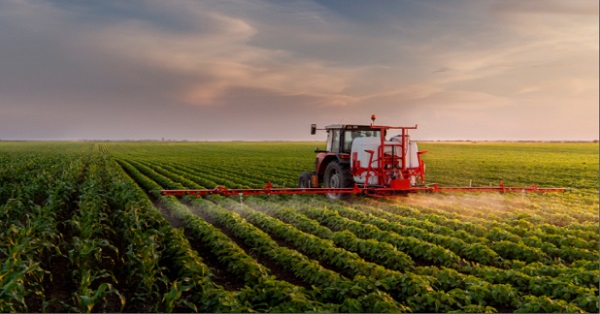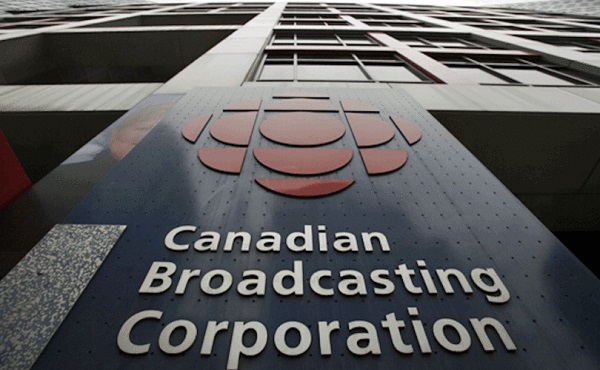Also Interesting
Wayne Gretzky’s Final Edmonton Oilers Jersey Sets a New Record: Most Ever Paid for a Hockey Jersey

The sports memorabilia market is heating up at the moment, and the record-breaking amount paid for the last jersey iconic hockey hero Wayne Gretzky wore for the Edmonton Oilers is clear evidence of this.
Even if you don’t have huge sums available to snap up meaningful items once owned by your favorite players, it’s entertaining to see just how much wealthy fans are willing to hand over. Let’s discuss what makes this particular jersey so special, and what else people who are passionate about hockey can do to show their support.
A game-changing auction lot
When the hammer fell on the recent sale of Gretzky’s jersey, a jaw-dropping winning bid of $1.452 million had been made to secure this totemic piece of otherwise standard hockey gear.
This easily toppled the $1.2 million paid for another jersey, this time worn by Paul Henderson, to set a new high watermark for hockey-based auction lots.
This type of sale is always interesting, in the sense that it’s not just the historic value of the lot that’s at play, but also its investment potential. The buyer will no doubt hope that Gretzky’s legendary status will grow with time, along with the value of the jersey.
How to watch the Edmonton Oilers play at home
If you want to catch the amazing Edmonton Oilers in the flesh, you can find a ticket for their next game via the web, and plan your game day visit in advance as well.
There’s something unbeatable about attending a hockey game in person, and the atmosphere is simply not something you can recreate when watching coverage from your own home.
Why this jersey in particular?
There are quite a few genuine Gretzky-worn jerseys out there, so what makes this one so special, and so valuable?
Well, as mentioned, it comes from the last game he played prior to leaving the Oilers in favor of a move to the LA Kings. It also has the honor of being from a Stanley Cup playoff game which actually had to be replayed due to a power cut part way through the first attempt.
Gretzky’s stellar performance was crucial to his team’s victory, and the post-game celebrations included him having champagne poured liberally over his head, which led to stains that can be seen on the jersey that was sold.
Other auction highlights
Any association with Gretzky helps sports memorabilia to sell, and the jersey wasn’t the only item worn by him which went under the hammer.
A little over $204,000 was paid for gloves he briefly used for protection during the aforementioned playoff game, demonstrating that even seemingly anonymous objects can fetch a pretty penny if they’ve got the right pedigree.
Of course even the $1.452 million that the jersey commanded is not even close to being the most expensive piece of sports memorabilia ever sold, when you include items from every sport, and not just hockey.
The Guinness Book of World Records reports that the current frontrunner sold in May of 2022 for a sum of £7.142 million, equivalent to $8.823 million. In this case it was another game shirt, this time one worn by soccer stalwart Diego Maradona during the quarter finals of the World Cup all the way back in 1986.
The particular game in which the shirt got its outing was one between Argentina and England, in which Maradona’s notorious goal put his team on the track to eventually win the whole tournament.
This record will no doubt be broken eventually, although it’s hard to imagine ever being able to justify such an investment.
Also Interesting
Understanding Slot RTP and Variance: Which Slot Game Is Right for You?

When it comes to playing slots, luck plays a huge role, but there’s more to winning than just spinning the wheels. Checking the variance and RTP of a slot game beforehand can help you find one that matches your style and strategy. Whether you’re a casual player or chasing a jackpot, understanding these factors can improve your experience. For Canadian players looking to try their luck, Tenexcasino.com is a top choice among crypto casino sites, offering a great platform to explore these games.
What is RTP?
RTP or Return to Player shows how much of the money you bet goes back to you over time. It also shows you the “house edge,” or how much of your money goes to the casino over the same period. If a slot has an RTP of 90%, 90 cents of every dollar you bet goes back to you. The remaining 10 cents is the “house edge” or the profit the casino will likely make.
RTP is measured over time and doesn’t tell you what will happen with each spin. But it can tell you which slot games to pick if you want to minimize risk.
What Is Slot Variance?
Variance also shows the risk of playing each slot game. But unlike RTP, it determines how often you can expect to win and the average size of each payout. Will you see small, frequent wins or rare but potentially huge payouts?
Depending on your preference and budget, you can opt for low, medium, or high-variance slots. Low-variance slots offer frequent but smaller payouts, medium-variance slots provide a mix of frequent smaller wins and occasional bigger winnings, and high-variance slots give rare but significant payouts.
What’s the Right Type of Right Slot Game for Me?
Variance and RTP can help you select the slot games that suit your style and the risk you’re
willing to take.
High RTP Slot Games
High RTP games are an ideal choice if you’re on a small budget. They will give you the best chance to build your bankroll and get more from your investment. You should look for games with at least 97% RTP, like Mega Joker (99%), Codex of Fortune (98%), and Starmania (97.87%).
While these games ensure you get more of your money back in the long term, they won’t necessarily help you maintain your bankroll. If that’s what you’re looking for, you should ensure the slots also have low variance.
Low Variance Slots
Low-variance slots are a perfect choice if you’re looking for steady gameplay with minimal risk. They allow you to play longer without large swings in your balance. But it’s not without its thrill.
If you like frequent wins, these games certainly keep the excitement alive. Some of our favorite low-variance games are Starburst, Jack Hammer, and Blood Suckers.
Medium-Variance Slots
These are a sweet spot. Medium-variance slots are perfect if you want steady payouts with the occasional thrill of big wins. They allow you to avoid the risk of high-variance slots while enjoying some of the excitement. Temple of Iris, Wolf Gold, and Golden Winner are great medium-variance slots worth checking out.
High-variance Slots
High-variance games are your best bet if you dream of hitting the jackpot. The risk is undoubtedly high, but you can win a massive payout. However, these slots may not be the best choice for prolonged gaming sessions. They can, however, provide convenient and enjoyable entertainment when traveling or during your lunch breaks.
High variance slots often include progressive jackpots. Some of our favorite high-variance slots include Rome: The Golden Age, Twin Spin Megaways, and Jack in a Pot.
Having a healthy bankroll is necessary here. But even more so, you need patience. You may go through several spins without a win, but the payout can be significant when you do win.
Also Interesting
The Role of Satellite Imagery in Developing VRA Prescription Maps

Since its appearance in the 1980s, precision agriculture has revolutionized farming, offering innovative solutions to age-old challenges. One of those is Variable rate technology (VRT), which plays a key role in improving efficiency and sustainability in today’s farming methods.
By applying inputs like fertilizers and water in different quantities across the field, VRT helps optimize crop yields and reduce costs. This technology relies on data collection and analysis to create detailed VRA prescription maps, allowing for customized input applications.
With the right equipment and technology, VRT can significantly improve agricultural productivity. Today’s advanced tractors, equipped with built-in terminals and specialized software integrated with a precision agriculture platform, use prescription maps to accurately apply variable rates of water or chemicals based on GPS location and management zones.
Variable Rate Technology In Precision Agriculture
Precision agriculture is a game-changer, moving far beyond traditional farming methods. Often called satellite farming, this approach focuses on crop condition monitoring, measuring, and responding to variability within fields. One of its standout innovations is variable rate application (VRA), which has caught the attention of farmers worldwide for its immense potential.
Why is VRA so important? It goes beyond simply fertilizing, seeding, and applying pesticides. It’s about utilizing technology to apply various expendable materials on and beneath the field automatically.
Farm management software simplifies contemporary farming by combining data and technology to improve farming efficiency, sustainability, and profitability. Precision agriculture platforms consolidate operations, crop health monitoring through satellite imagery, and offer real-time suggestions, enabling farmers to make informed decisions for the best use of resources (through VRA) and increased productivity.
Variable rate application offers numerous advantages for modern agriculture:
- VR fertilizer enhances farming efficiency.
Adjusting rates based on soil health and plant needs helps save resources and increase yields. Research shows this method can lead to higher net income and healthier soil compared to using uniform rates: “The net incomes of VR management zone were 15.5–449.61 USD ha−1 higher than that of traditional spatially uniform rate fertilization.”
- VR irrigation saves water, time, and fuel while reducing machinery wear.
Applying the correct amount of water to different parts of the field based on soil moisture levels and crop requirements reduces wear and tear on irrigation equipment compared to uniform irrigation.
Studies claim: “Variable rate irrigation (VRI) can increase water use efficiency and productivity by applying water based on site‐specific needs.”
- VR seeding increases crop yield by adjusting seeding rates based on soil fertility.
VR seeding adjusts seeding rates based on soil fertility and other factors to optimize plant populations and yields. It is commonly used alongside variable rate fertilization as part of a comprehensive precision agriculture strategy.
Findings show that: “The application of VRS to the seeding of various crops shows positive agro-economic trends, additional yields, and higher economic returns.”
- VR pesticide reduces environmental pollution and improves pesticide efficiency.
VRT helps farmers target pests more accurately and use less pesticide.
Studies have found that “VR management zone reduced the use of nitrogen (N), phosphorus (P), and potassium (K) fertilizers by 22.90–43.95%, 59.11–100%, and 8.21–100%, respectively, and it also increased the use efficiency of N, P, and K by 12.27–28.71, 89.64–176.85, and 5.48–266.89 kg/kg, respectively, without yield loss.”
This demonstrates the ability of variable rate technologies to improve pesticide effectiveness and reduce environmental pollution in agriculture.
Using Various Technological Means For Informed Decisions
Applying different technological tools is essential for implementing variable rate technology in agriculture. This includes smart machinery, fertilizers, seeders, soil sensors, geographic information system (also called GIS), and the Global Navigation Satellite System (GNSS) applications for field mapping. Additionally, having supporting infrastructure, which helps manage and analyze info from different sources, is crucial for successful implementation.
Understanding the location, timing, and methods for seeding, fertilizing, and harvesting is key in remote crop monitoring and precision agriculture, where data plays a vital role in managing resources effectively.
This information is taken from a wide variety of data sources.
- Sensors. Moisture, soil nutrients, compaction, weather stations (humidity, temperature, wind speed)
- Drones and satellite photography. Field hyperspectral imaging.
- GNSS. Event coordinates, also points and times for obtaining time-series data
- Spatio-temporal data sources. Spatio-temporal specific data (trajectories of agricultural machinery, spatiotemporal points, event points, time-series information)
- Maps. Field boundaries, soil type, surface levels)
- AI solutions. Prediction of weather conditions, detection of plant diseases.
However, simply collecting raw data is not sufficient. It is necessary to process this information to extract valuable insights, make informed decisions, and enable automatic alerts and control signals for agricultural equipment. Thus, you must have the capability to:
- Gather data;
- Transform the data to extract valuable insights for precision farming gear;
- Upload the data into agricultural equipment;
- Retrieve real-time data from tractors, seeders, fertilizers, and other machinery.
By following these steps, farmers can make the most of modern technology, optimizing their farming practices and boosting efficiency.
Use Of Satellite Images In Building VRT Maps
Satellite crop monitoring imagery can be used to generate different kinds of VRA maps for various purposes. As nitrogen is one of the most critical elements plants need, building map for its proper application is a major task.
Nitrogen fertilization maps play a crucial role in optimizing the application of water, nitrogen, and crop protection products.
When creating a VRA map for nitrogen fertilizer, you can choose from various indices that provide valuable insights:
- MSAVI is sensitive to uncovered soil and, therefore, is ideal for planning VR fertilizer application in the early stages of growth.
Example: Early in the growing season, a corn farmer uses MSAVI to detect patches of uncovered soil in their field. This helps them apply fertilizer more accurately, ensuring that nutrient-rich areas receive the right amount of input and promoting uniform growth.
- ReCI measures chlorophyll content in leaves, helping to identify field areas with faded and yellowed vegetation that may need additional fertilizer.
Example: A soybean grower notices using ReCI that certain sections of their field have yellowed leaves, indicating possible nutrient deficiencies. They apply additional fertilizer to these areas, restoring plant health and boosting overall yield.
- NDVI indicates biomass accumulation zones and areas with low vegetation that might demand larger amounts of fertilizer.
Example: A cotton producer uses NDVI to map out zones with varying levels of biomass across their field. They adjust their fertilizer application rates, applying more in areas with lower vegetation to support growth and maximize their harvest.
- NDMI is well-suited for VR irrigation by identifying areas that are under water stress.
Example: During a hot summer, a vineyard uses NDMI to pinpoint areas suffering from water stress. They adjust their irrigation system to provide extra water where it’s needed, ensuring the vines remain healthy and productive.
-
- NDRE helps identify stressed or dying vegetation in the middle to late stages of a season, aiding in effective fertilization strategies.
- Example: During the season, a wheat farmer uses NDRE to identify patches of the field where the wheat plants are showing signs of nutrient stress or poor growth. By applying a mid-season nutrient boost specifically to these stressed areas, the farmer improves the overall health and yield potential of the wheat crop.
Field Productivity Maps
Field productivity maps can be created by analyzing satellite images to pinpoint areas with high or low crop yields. By using the NDVI index and advanced machine learning algorithms, different productivity zones can be identified.
Key applications of productivity maps include:
- Potassium and phosphorus fertilization
Historical productivity zones data can help avoid excessive application in areas where these nutrients may have accumulated with time.
- Variable rate planting
Farmers can apply different seed amounts in various productivity zones to either maximize yield or achieve uniform distribution across the field.
- Land evaluation
Field productivity can be assessed before purchasing or renting land; it helps reduce risk and enhance profitability.
- Targeted soil sampling
Soil sampling efforts can be focused on key areas indicated by productivity data, rather than relying on generic grid sampling.
As you see, variable rate application (VRA) is a cost-effective method that can save you 10% on planting and cultivation costs based on the characteristics of the soil. To fully benefit from VRA, it’s important to understand the technologies involved, such as sensors, GNSS, earth observation pictures from drones and satellites, and digital maps, which provide crucial data for analysis and implementation. We sincerely hope that you succeed in your farming endeavors with modern technology!
______________
Author Vasyl Cherlinka
Vasyl Cherlinka is a Doctor of Biosciences specializing in pedology (soil science), with 30 years of experience in the field. With a degree in agrochemistry, agronomy and soil science, Dr. Cherlinka has been advising on these issues private sector for many years.
-

 Alberta2 days ago
Alberta2 days agoProposed $70 billion AI data centre in MD of Greenview could launch an incredible new chapter for western Canadian energy
-

 Brownstone Institute11 hours ago
Brownstone Institute11 hours agoA Potpourri of the World’s Unexposed Scandals
-

 Alberta1 day ago
Alberta1 day agoYour towing rights! AMA unveils measures to help fight predatory towing
-

 Economy9 hours ago
Economy9 hours agoThe White Pill: Big Government Can Be Defeated (Just Ask the Soviet Union)
-

 conflict8 hours ago
conflict8 hours agoTrump has started negotiations to end the war in Ukraine
-

 COVID-197 hours ago
COVID-197 hours agoEsteemed UK Doctor pleads with governments to cancel COVID-19 vaccines
-

 COVID-1912 hours ago
COVID-1912 hours agoBiden HHS extends immunity for COVID shot manufacturers through 2029
-

 Business6 hours ago
Business6 hours agoThe CBC gets $1.4 billion per year, but the Trudeau government wants to give it more




